If you remember, in the last elm post I had mentioned a form of propagation called “root cutting”.
This technique works well with elms, ficus salicaria, ficus burt-davii, crepe myrtle and others.
Basically, when you cut off the larger, unneeded roots to fit them into a smaller pot, you save those roots, put them in another pot, and, hopefully, they will grow. 
Which is where this tree came from. I got the raw stock from Schley’s Bonsai in Deland. It’s an American elm (believe it or not) root cutting. The American elm (ulmus Americana) has been decimated over the last century by Dutch Elm Disease and is not found much in the wild anymore.
I’m going to style two different root cuttings; one Chinese elm and one winged elm.
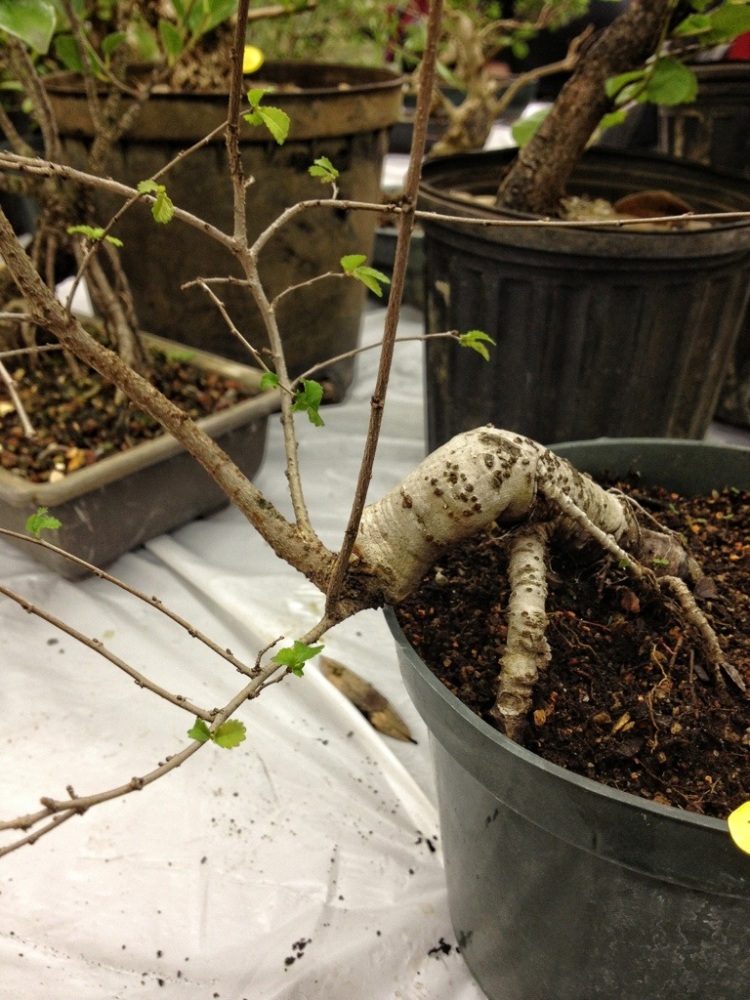
And ulmus parviflora, Chinese elm
I’ll start with the Chinese elm.

I’ve let it grow out (or on, as they say. which sounds weird to me; “grow it on”. Does it sound odd to you too?).

Maybe a bit too much. The shoot might be a somewhat hard to bend

Especially here. For one, it will probably just break off. And elm lignifies quicker closer to the trunk.
If we massage it a bit (whoever would have thought that massaging wood would make it softer and easier to bend?)

That’s it without wire and not touching it.
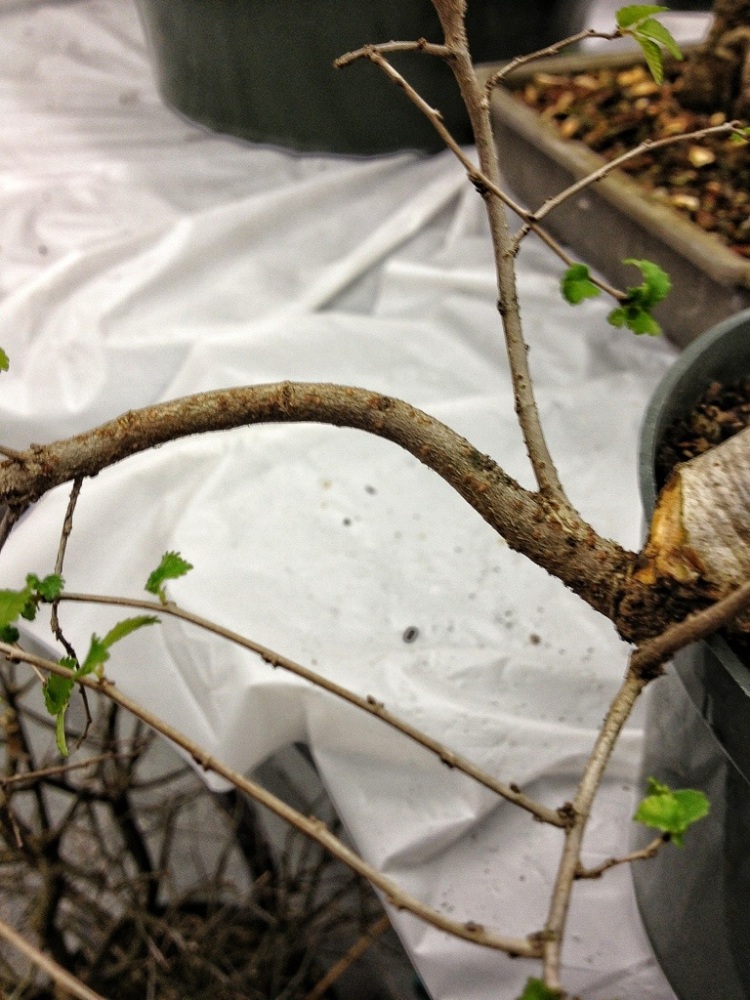
Now with wire

Neat,eh?
Now just continue the bending down

I’m going to make my bends where shoots are. As it grows it will look more natural.

And I’m going to prune off some unneeded shoots.

The bending is extreme on purpose. As the tree grows out the curves will soften and become less severe.
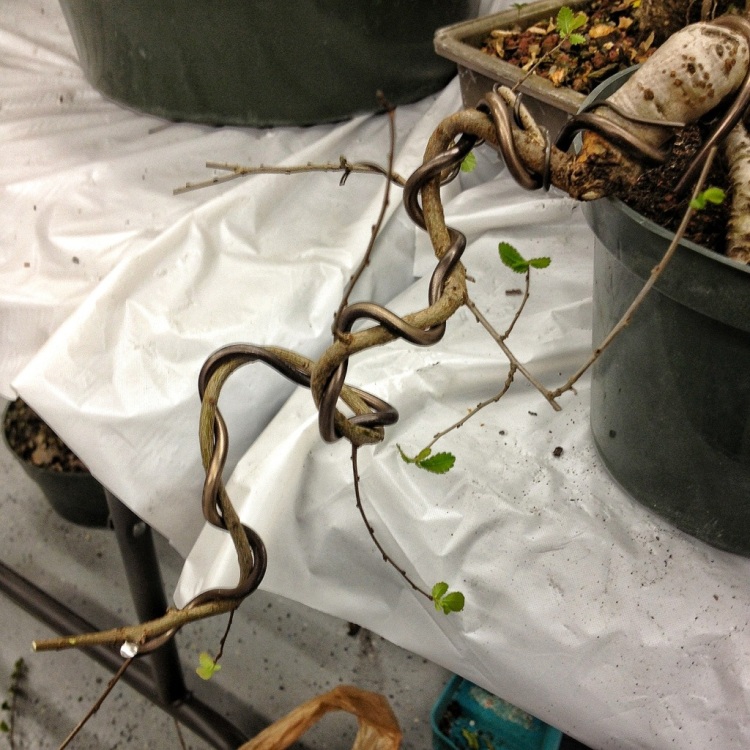
And some eagle eye views

Side
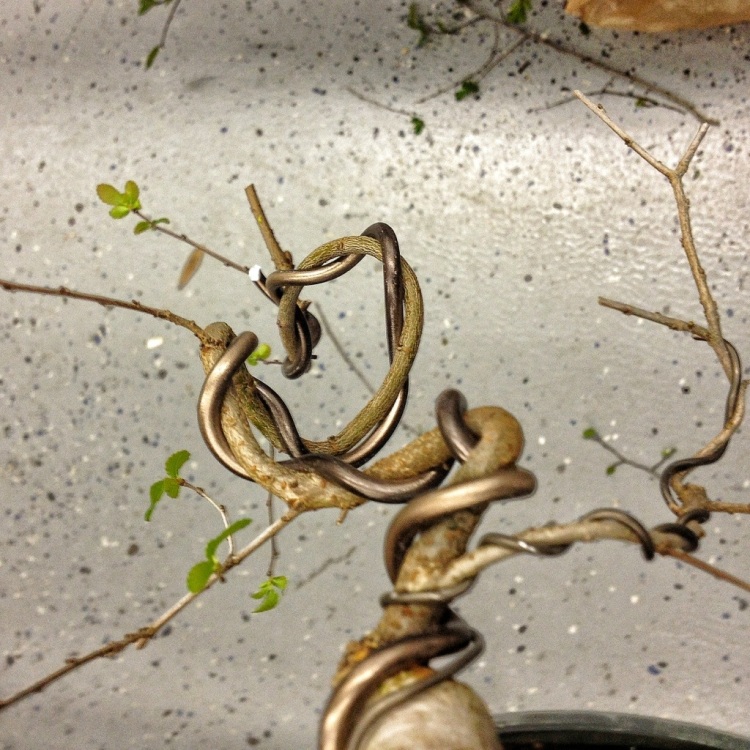
Top looking down.
Like I said, the bends will smooth over as time goes on. And I’m sure there will be at least 2 cuts for taper as the “trunk” thickens. This tree is, as they say in the trade, still in “production mode”. Therefore it stays in the nursery pot for a few more years. Maybe even getting bumped up once into a one gallon pot next year.
The thing about an elm, once the roots hit the edges of the pot, the growth slows considerably. The fastest growth, remarkably, is just after a repot.
So,it’s not just the Chinese elm we can do this to; here is that winged elm next.



This one needs its attitude adjusted methinks

And a de-pantsing

And let’s geld him too

Won’t need this sticking out here anymore.

This will be an opportunity to actually demonstrate how to propagate in this way. I’m a clever blogger now, aren’t I?
It is technically a root cutting off of a root cutting.

And Bob’s your uncle.
It’s as simple as that!
But wait!
There’s more!
We begin with the root

As it shows, the new shoots grow from the edge. I think it’s because the auxin (that hormone which causes bud growth) has nowhere else to go. (Read this link for a complex discussion of meristem differentiation.)

The problem is that you will get too many shoots.

If you don’t prune out the excess until you have only one shoot.

You’ll end up with a weird, knobby thing.
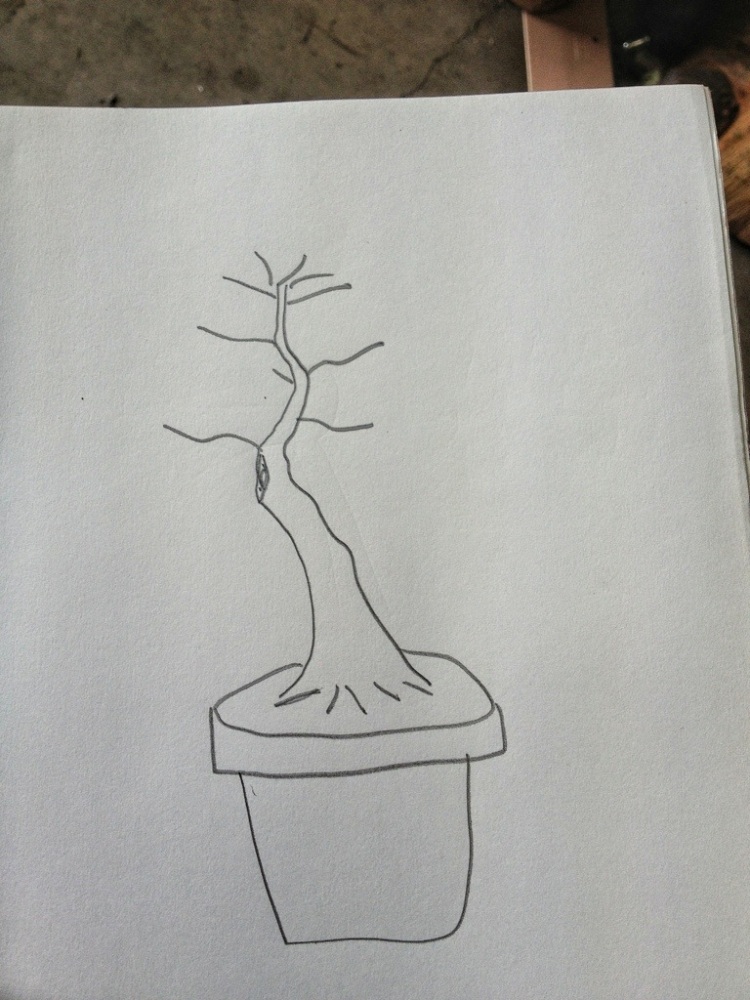
If you prune to one, that one shoot will catch up with the trunk pretty quickly.

As you see.


But take note, you won’t get a shoot anywhere on the “root” part. Only from the original cut and above.
Back to the winged elm.

While its out of the pot is the best time to dress the original cut.

I make sure I seal the cut ends.

I’ll bend where my pointer finger is pointing to and where my thumb is.

A little wire

Some bending.

More wire, more bending and

in the pot it goes. One more year of training in this pot. I’m using some good bonsai soil in it. I’ll have to check this one more often because of the faster draining mix but I should get better growth.
One more technique for root cuttings. I have a diagram:
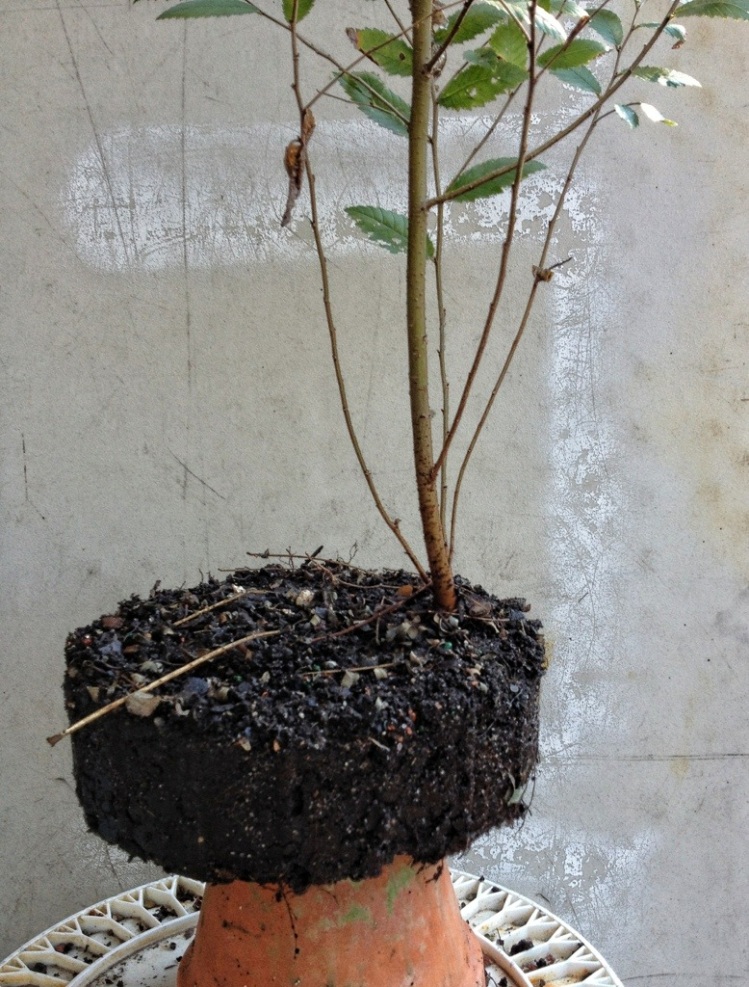
This is winged elm. One year’s growth!
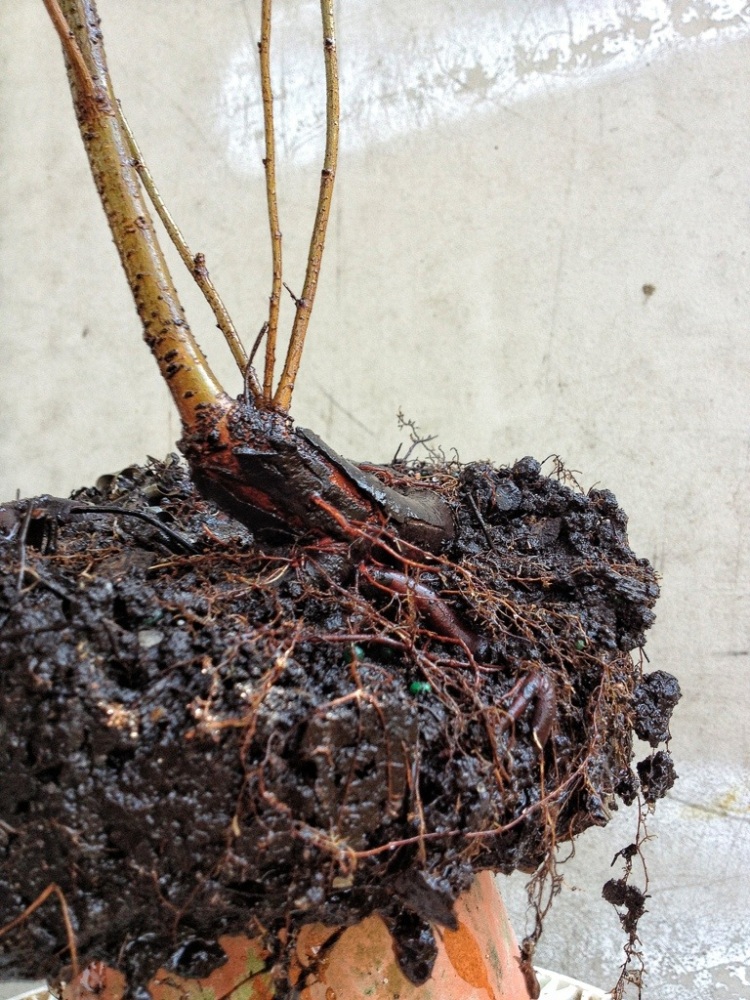
If I hadn’t topped it I believe it would have been six feet of growth. Amazing.

My plans for it this year is to put some soil underneath and let it grow some more.
As you might be able to tell, I really like root cuttings.
Here are some examples

This is a cute little one. Not much to it but a lot of fun. Chinese elm

This is a winged elm. I’ve shown it before. The twist on that one can’t be duplicated.
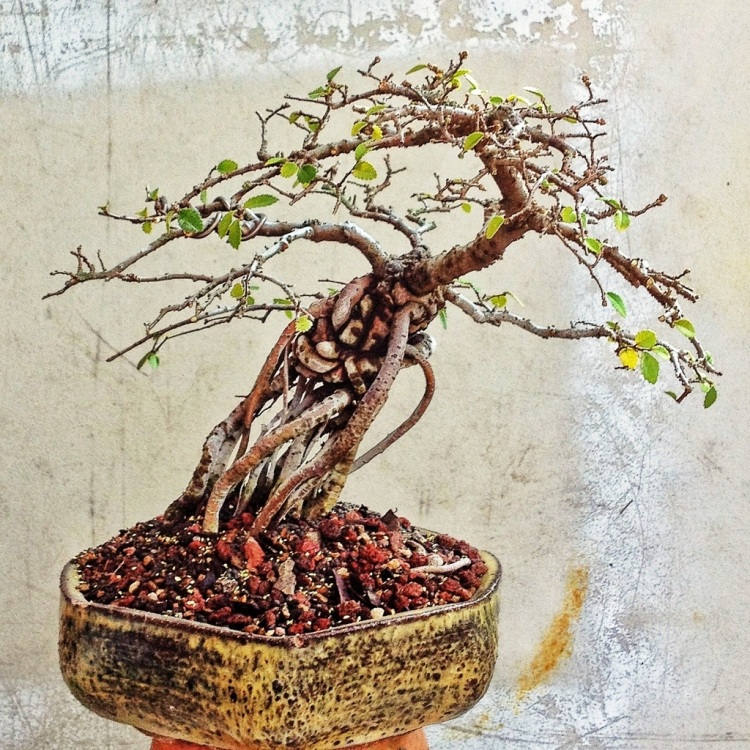
This exposed root elm is made up of a whole bunch of small roots tied in a knot

I’ve never found another like it and I can’t seem to duplicate it.
And my favorite at the moment

This sweet little tree is another one I stole ( I paid for both of them. Without dickering I might add. He was not happy selling them to me) from Schley’s Bonsai. It’s also an American elm. I see great things for this one. Definitely not for sale.
Not bad material for stuff usually thrown on the compost heap, huh?

And since I haven’t done a sketch in a while, here’s one for the Chinese elm above.


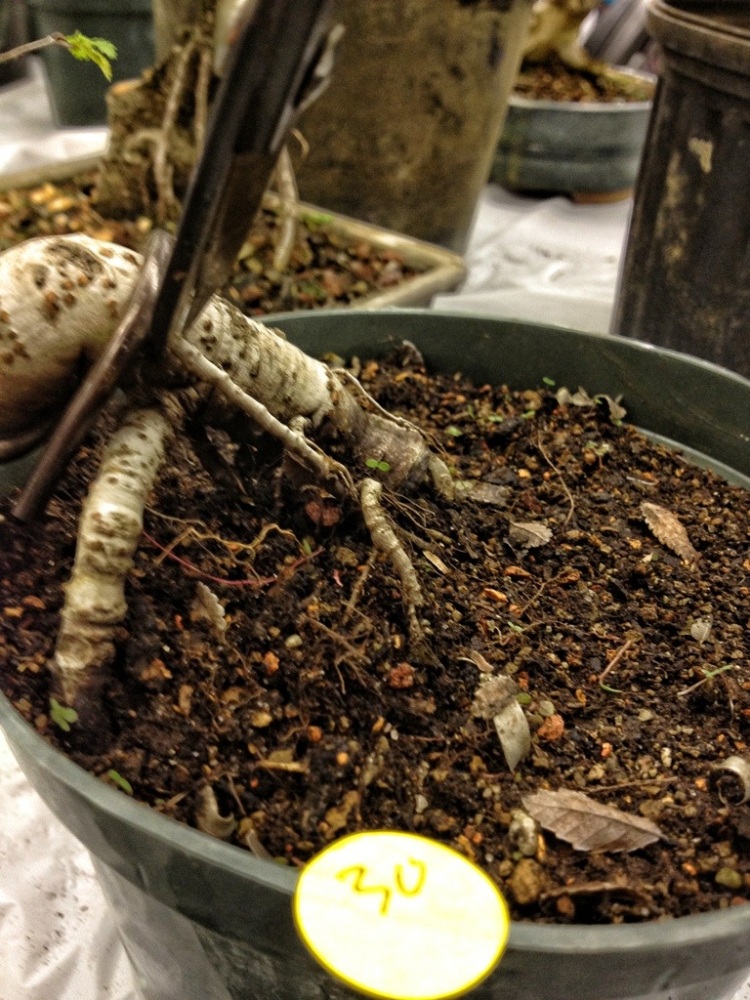


How long do these types of cuttings generally take to bud?
LikeLike
If you are doing them in the winter/ early spring then they should bud by the end of spring
LikeLike
Thanks for the info! I took some root cuttings early January when most of my Elms were budding out (quite early this year, even for Los Angeles), and the cuttings have not done anything. Wasn’t sure how patient I should be. Sounds like I should keep waiting. Looking forward to seeing how they turn out. Great blog by the way! Thanks again
LikeLike
Yes, be patient. There aren’t any buds on the root itself so the cells have to change and that takes a little time. Good luck and thanks!
LikeLike
Its Treecycling o-o
LikeLike
i literally *adore* your diagrams. wildly helpful.
LikeLike
Thanks for all the info . hard to find out how to take samples from the wild and bonsai them. My great grandfather planted a tree that I want a piece of . the land is going to be sold and the tree will most likely be destroyed. A piece of that tree would keep my grandparents with me always . thank you very much !!
LikeLike
Awesome write up with great specimens!
Two questions:
Do you think the above-ground sections of root cuttings would send bids out from cuts made in the exposed area as well as the exposed end of the cutting? Like if you were to shave or drill a small bit of the “bark” off of the exposed root.
Also, have you had more success with one species over the other? I have plenty of American Elm trees around me that I would like to experiment with and I was curious if they are as easy to propagate via root cuttings. I saw your other write up on the American Elm you have but I wanted to ask about difficulty.
LikeLike
As far as different species, they all seem to work very well as root cuttings.
And you will get new growth if you shave off or drill holes in the exposed areas. The new buds come from the cut areas
LikeLike